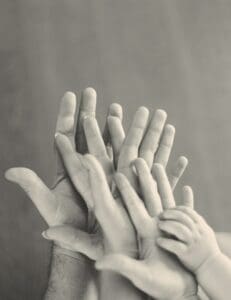Miracle Messages supports unhoused people with weekly calls and texts. Then it started giving them cash—and saw a massive impact.
By: Adele Peters
For the last six months, a San Francisco-based nonprofit that works with people experiencing homelessness tried a simple experiment: If it gave some people a small basic income of $500 a month, how much could it help?
The nonprofit, called Miracle Messages, pairs unhoused people with volunteer “buddies” who make weekly calls and texts and offer support.
(The volunteers also use social media to reconnect people experiencing homelessness with family members with whom they’ve lost touch.) The volunteers realized that even small amounts of money could make a difference in these people’s lives. “We were just hearing more and more from our volunteers that hey, my unhoused friend is just in need of a few hundred dollars here and there to address these problems that are really stumbling blocks from helping them get housed or stabilized,” says Kevin Adler, CEO and founder of Miracle Messages.
Inspired by a successful program in Vancouver that gave $7,000 cash transfers to homeless participants, the San Francisco nonprofit decided to try the same thing on a smaller scale. With a limited amount of money from donors for the pilot—$50,000—it decided to give 15 people $500 a month for 6 months.
“We didn’t know if this was going to work; we didn’t even know how to properly administer this, how to set up bank accounts, how to give people financial-literacy coaching, how to avoid ‘cliff effects’ so people didn’t lose benefit eligibility,” he says.
“So, we were just like, let’s pick a ticket amount that no one should blink twice at. It’s not large sums of money, but it’s still meaningful enough that it could make a significance difference for people who have a good plan in place for how to use it.”
The group asked its volunteers to nominate people for support, and then selected a small cohort based on factors like diversity, how long someone had been experiencing homelessness, and ongoing engagement with the Miracle Friends program. People who were currently struggling with addiction or in early recovery weren’t eligible.
With the caveat that the funds shouldn’t be spent on drugs or other illicit activity, participants could spend the money however they needed. “There’s, I think, a lot of implicit paternalism in the homeless services space,” says Adler. “It was really important in our program design that we move past that, that we’re not coming to the table with an assumption that we know better than you do how to spend funds.” One woman, for example, used some of the money on necessities but also donated a small portion back to the organization. “When I asked her, ‘Why on earth did you do this? There’s no expectation, you didn’t need to do this,’ she said, ‘I didn’t do it for you. I did it for myself. And I’m doing it so I can once again feel the dignity of being able to support a cause that I believe in.’”
Participants used the money on essentials like food and medication and transportation. One person used it to adopt a service dog to help prevent seizures. Another helped his daughter pay for college tuition. Sixty-four percent of participants said that the money helped reduced their stress and worry about finances. And despite the relatively small amount of assistance, more than a third of the participants were able to move into housing.
Ray, a participant who asked that his last name not be used for privacy reasons, used the funds to move out of state and pay his share of rent in a home shared with an old friend.
“Miracle Money allowed me to save the funds necessary to move into permanent housing,” he says. “Without it, I would still be struggling to meet my daily needs, much less save for a home.”
Elizabeth, a former public school teacher who was evicted after she had to stop working to undergo cancer treatment, was able to use the money to move into senior housing that requires a small monthly payment. Another woman was able to move into a single-room occupancy hotel and buy basic supplies like pots and pans.
The program didn’t work perfectly. One person who planned to participate, for example, was hospitalized during the pilot, and didn’t feel well enough to set up a bank account, so she had to drop out. Another person may have been struggling with addiction. But overall, it was enough of a clear success that the nonprofit is now raising money to continue and expand the program. “To have such a large percentage able to secure housing on their own resourcefulness, and then work with their friend to get the support they need, it almost, in my mind, is a moral obligation to find a way to keep this going and also encourage other communities to try to do similarly,” says Adler.
He says that the group’s approach of developing true relationships with unhoused people is part of what makes the program work well, because the volunteer friends can help identify people who can make the most use of the funds and give them support as they spend it. But cash transfers could become a bigger part of what the organization does.
“I think nonprofits in general should have in the back of their mind kind of a plan to work themselves out of a job,” he says.
“If your staff and expenditures and budget would almost be better allocated by giving directly to individuals on the streets and kind of just showing up directly, at some point you have to ask, am I making the biggest difference that I could? Or should I essentially just disband and give out all the funds?”
_______________________________________
About the Author: Adele Peters is a staff writer at fast company who focuses on solutions to some of the world’s largest problems, from climate change to homelessness. previously, she worked with good, biolite, and the sustainable products and solutions program at uc berkeley, and contributed to the second edition of the bestselling book “worldchanging: a user’s guide for the 21st century.




















